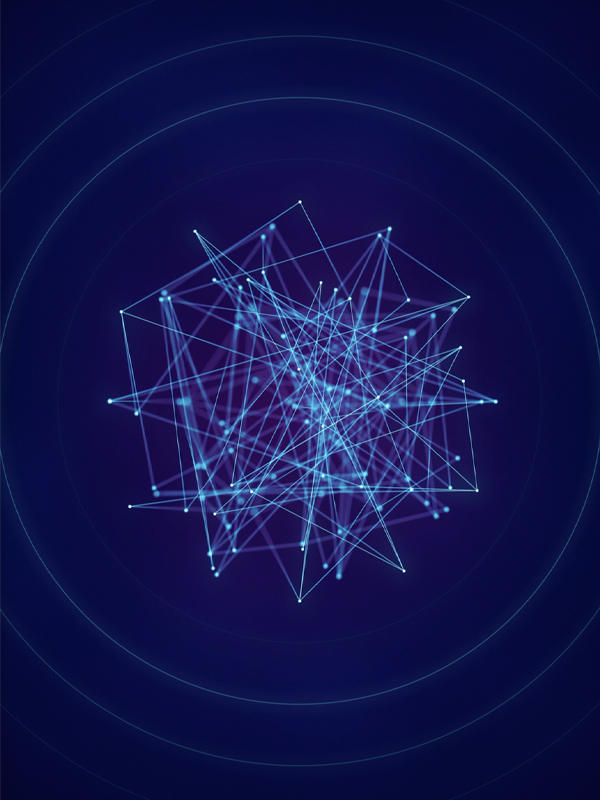The JPEG is dead. Let me explain.
My background is in animation, film production, and advertising, so I'm well-versed in JPEGs. While we still use them daily, they're less relevant with the rise of high-bandwidth 3D image formats.
When you take a photo on your iPhone, for example, it captures depth data with LiDAR lasers for features such as background separation and augmented reality. Most consumer devices now contain graphics cards capable rendering real-time 3D graphics. These technological developments are changing how we experience the world. Our world is more immersive than ever before.
Read on for examples of augmented and virtual reality all around us and the steps you can take to create unique immersive experiences for your own brand.
Immersive experiences cut across nearly every industry

“But my company is not in the tech industry!”
That may be true. But your customer is surrounded by first-class immersive experiences—no matter what industry you are in. Don't let a competitor gain a competitive advantage by building an immersive experience that consumers come to expect.
Let's look at how our world has become more immersive in many different industries and how brands are leveraging these developments to connect with audiences in meaningful ways.
Vehicle displays
Many modern cars use augmented reality with your backup camera to display collision warnings over objects in your path. This is one use case where augmented reality might save a life.
Flight trackers
Have you flown recently? Many airlines have an interactive flight tracker. These show the aircraft in three dimensions while displaying the aircraft's location on a map, speed, altitude, and more.
Some airlines, such as Southwest, have the feature built into a webpage that can be accessed by connecting to the inflight Wi-Fi. The tracker runs in a phone browser with interactive 3D graphics.
Fitness classes
Fitness is becoming an immersive experience. Do you have a Peloton at home? Workouts at home can transport your mind to beautiful locations around the world thanks to immersive videos featuring drives through forests, mountains and deserts. If that sounds too isolating you can join a live training session with a coach and participants ranked on an interactive leaderboard. You can even start a video call with friends during the workout thanks to a built in webcam.
Supernatural is a virtual reality workout app gaining popularity. Users break a sweat by waving virtual bats or boxing the air. The fitness industry is leading with immersive technology and sister industry Sports isn't far behind.
Sports
If you are a baseball fan then you might have noticed a new feature in the MLB app. During a live game, fans can fly around a 3D twin of the game where players appear as video game characters in real time.
This means that instead of being stuck in your seat at the game or only being able to view the camera angle on the TV, you can be anywhere and see the game from the point of view of the batter, pitcher, or an outfielder.
Video games and brands
Video games and brands are a natural pairing. There are two approaches to leveraging games to deliver an experience to your customers.
The first approach, known as “Gamevertising,” features the product in the game, similar to product placement in TV and movies. Users can purchase items such as clothing or upgradable items such as Pirelli Tires for their vehicles in a racing game. Even heavy equipment manufacturers like John Deere are featured in games like Farming Simulator, where users drive John Deere combines and tractors on their virtual farms.
The second approach is to design a game where players can have delightful experiences connected to the brand. Today, many brands are building games on platforms such as Roblox or Fortnite, with easy-to-use game-building tools and millions of daily active users. Nike launched NIKELAND in Roblox and received over 32 million visits. Hasbro also launched NERF Strike on Roblox and received over 60 million visits.
With almost 70 million daily active users, Roblox itself is a platform to watch. It has grown year after year and shows no signs of slowing down. Numbers for Fortnite experiences are not readily available, but we can assume that brands partnering with Fortnite have access to their visit count.
E-commerce
Real-time 3D graphics are becoming indistinguishable from actual photos. Not only does this make product photography at scale a breeze, but it also means your customer can get a close-up look at product details such as stitching as they rotate and zoom around the product.
Crate & Barrel is one such early adopter. Many of the products on their website can be viewed in 3D eliminating the need to go to the store and see it for yourself or having to return it because it wasn't quite what you expected.
Amazon, Target, and IKEA are taking a different approach using augmented reality. You can view items in your home at their actual size to preview purchases to see how they would look in your home before you purchase it.
Virtual try-ons
Virtual try-on technology uses augmented reality to preview fashion with your phone camera. Warby Parker was one of the first brands to use this and now it is a core feature on their website where anyone can try on a pair of new glasses without leaving their home. L'Oréal has used advanced in augmented reality to allow users to try on many types of makeup including lipstick and it is surprisingly convincing.
Some brands, such as Tommy Hilfiger, have taken virtual try-on into the physical store with augmented reality mirrors. Imagine picking out an outfit, seeing how it looks on you, and knowing if it was in stock—all without the hassle of picking out an item in the store, searching for your size, and using the dressing room.
Augmented reality customer experiences
Other brands, such as LEGO, are turning a store visit into a magical excursion with augmented reality. By holding any LEGO box up to a display in the store, you can see the contents inside come to life. As a child, imagine seeing the toys in the box come to life.
Many brands are launching augmented reality experiences triggered by QR codes. Burger King did this and featured rapper Tinie Tempah on a Whopper. Think about how you can turn a simple meal into a concert for someone on break.
How do you develop memorable, immersive experiences for your own business?

Immersive technology is a huge opportunity for brands. This is your chance to give someone an unforgettable “wow” moment. Here's how we do it at Aquent.
The immersive experience does not stand on its own. It is a part of a customer journey. There must be anticipation for the experience in the early stages and there must be follow up after the experience. We can begin to map out this journey after taking inventory of the existing channels your customers interact with. Note which channels are physical and which are virtual.
- Physical
- Storefront.
- Popup.
- POS.
- Interior Design.
- Customer Service Traditions.
- Product Design.
- Packaging.
- OOH Paid Media.
- Mailers.
- Loyalty Programs.
- Virtual
- Website.
- Apps.
- QR Codes.
- Paid Media (Social, OOT, Display).
- Social Media.
- Augmented Reality.
- Virtual Events.
- Gaming.
Consider how the physical and virtual channels you use to interact with customers can interface to create novel experiences. Or how a customer journey hops from one channel to the next.
To help inspire creative thinking for journey mapping, ask yourself and your team:
- How might an immersive experience bring value to your brand?
- Can it increase the amount of time our customers interact with us?
- Can it make surveys fun?
- Improve customer retention and repeat purchases?
- Uncover new customer behavioral insights?
- Reward customers for participating in a loyalty program?
As you answer these questions and consider both physical and virtual channels; the immersive experience and the customer journey will become apparent.
With an immersive concept and a customer journey map, it's time to start prototype and test. Some roles you may need to help include:
- 3D Animators.
- 3D Character Artists.
- 3D Environment Artists.
- Art Directors.
- Audio Engineers.
- Back-end Developers.
- Blockchain Developers.
- Concept Artists.
- Community Managers.
- Copywriters.
- Creative Technologists.
- Front-end Developers.
- Graphic Designers.
- Platform Builders.
- Producers.
- Product Managers.
- Special FX Artists.
- System Architects.
- Technical Artists.
- UX Designers.
- XR Developers.
Producing immersive content requires a lot of disciplines and is similar to both theme park attraction design and video game production. That's not something most design organizations have experience with.
Getting started can be intimidating and we don't want to waste time and resources only to fail. This is a golden opportunity to be an innovator and lead your industry. Don't let the fear of failing prevent your team's best ideas from being shared with the world. Here are five steps to get started:
- Use business value as a foundation to brainstorm an immersive experience.
- Create a journey map for your customer across your physical and virtual channels considering how you will build anticipation for the immersive experience and how you will follow up after.
- Prototype and test early. It doesn't have to be perfect or complete.
- Modify your approach based on data from testing.
- Launch and iterate.
Successful projects often require a trusted partner with the talent and experience to deliver. Aquent Studios has experience delivering immersive experiences for brands including ExxonMobil, L'Oreal, Meta, Snapchat, NASA, Boeing, Rockwell Automation, and others.
Is the JPEG dead? Maybe not, but immersive content is taking over.
Get in touch today to learn more and find out how we can help you build immersive experiences for your brand.




